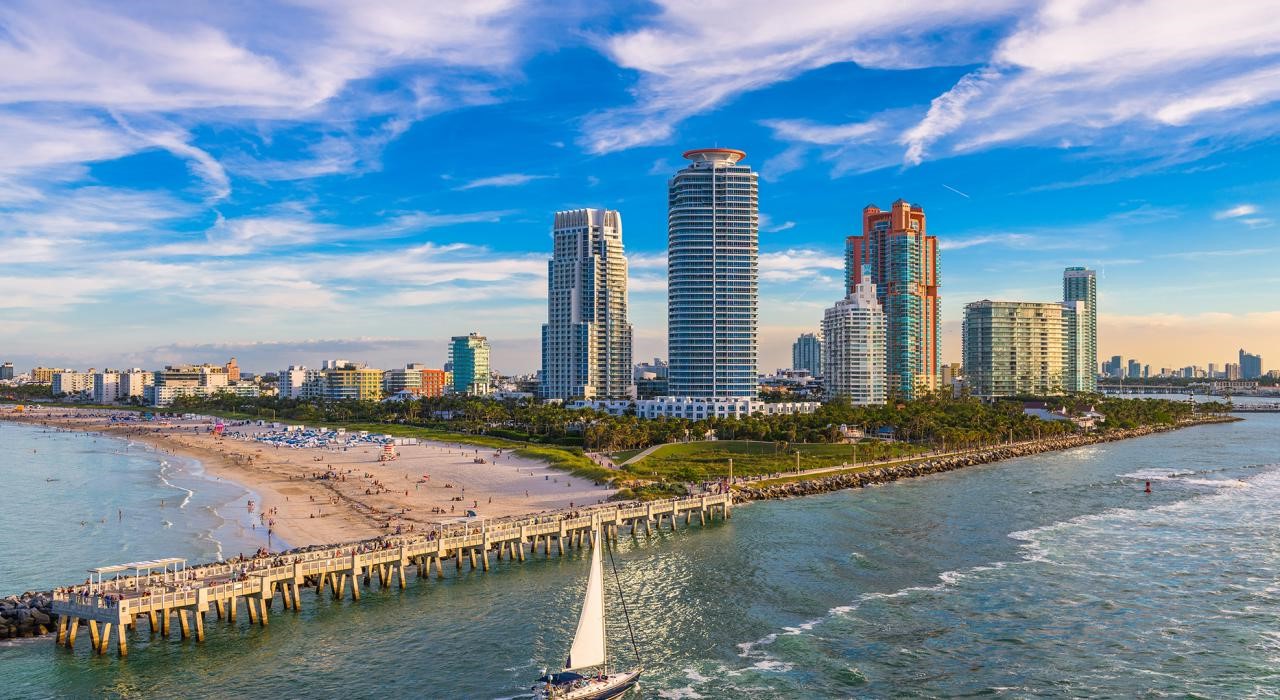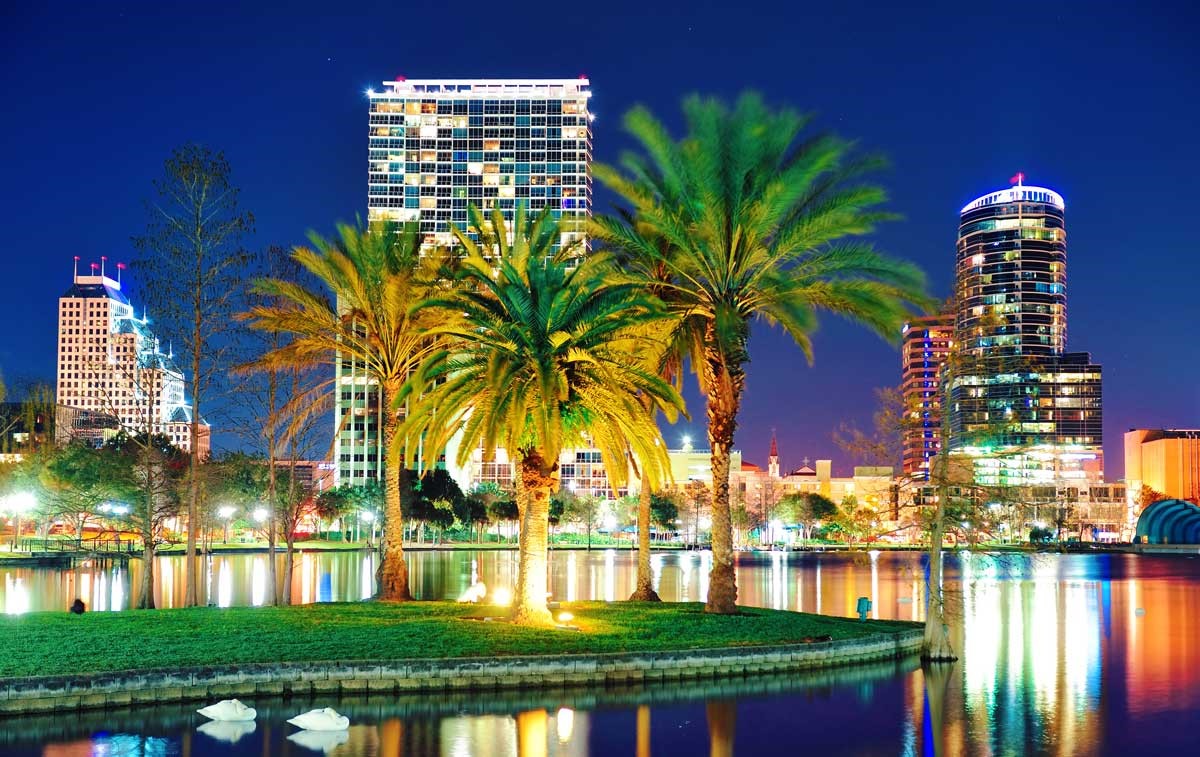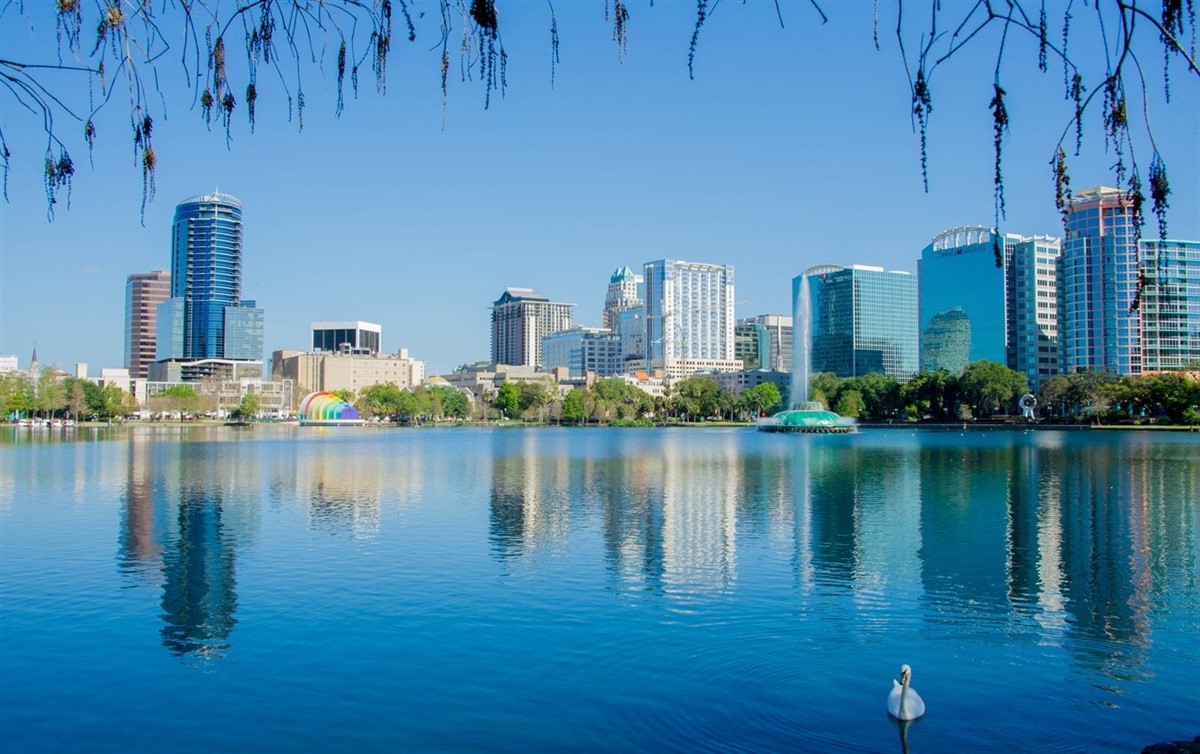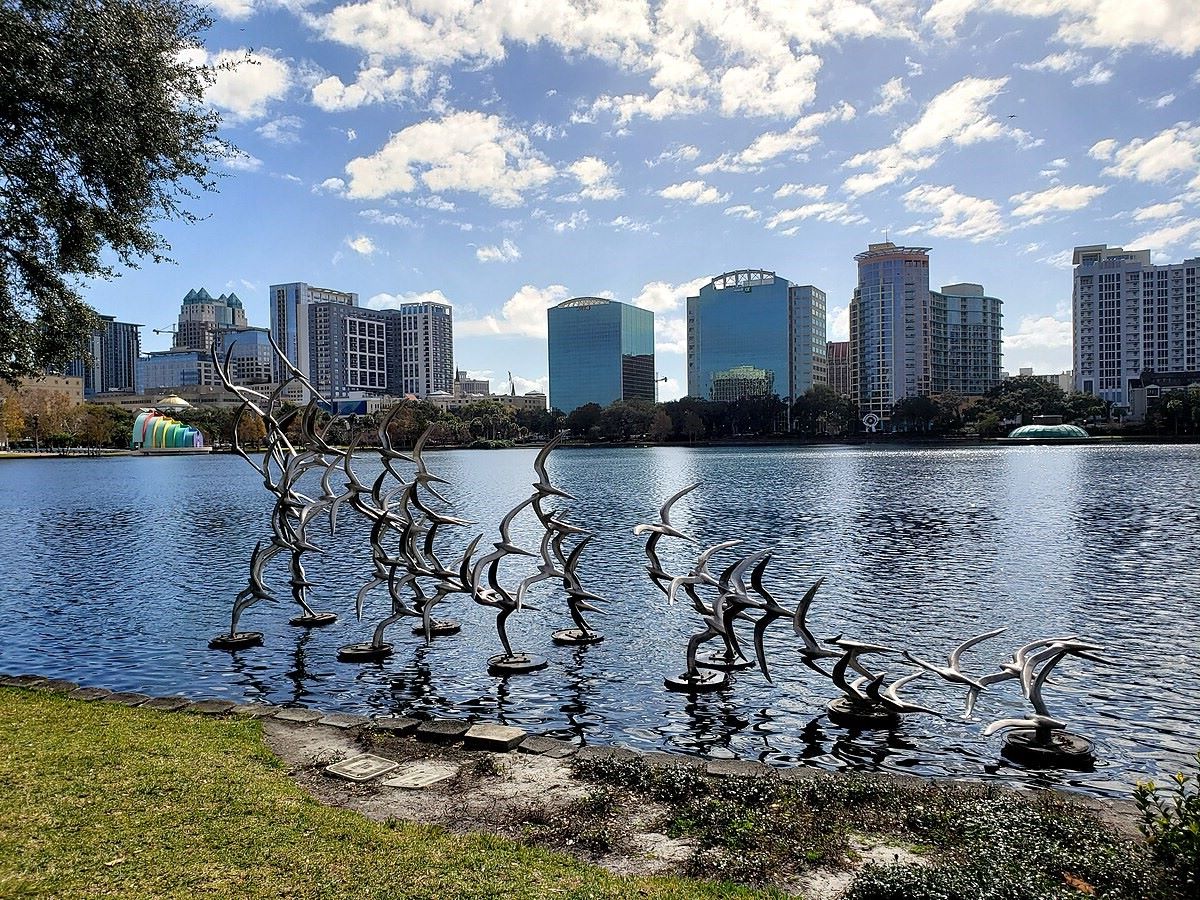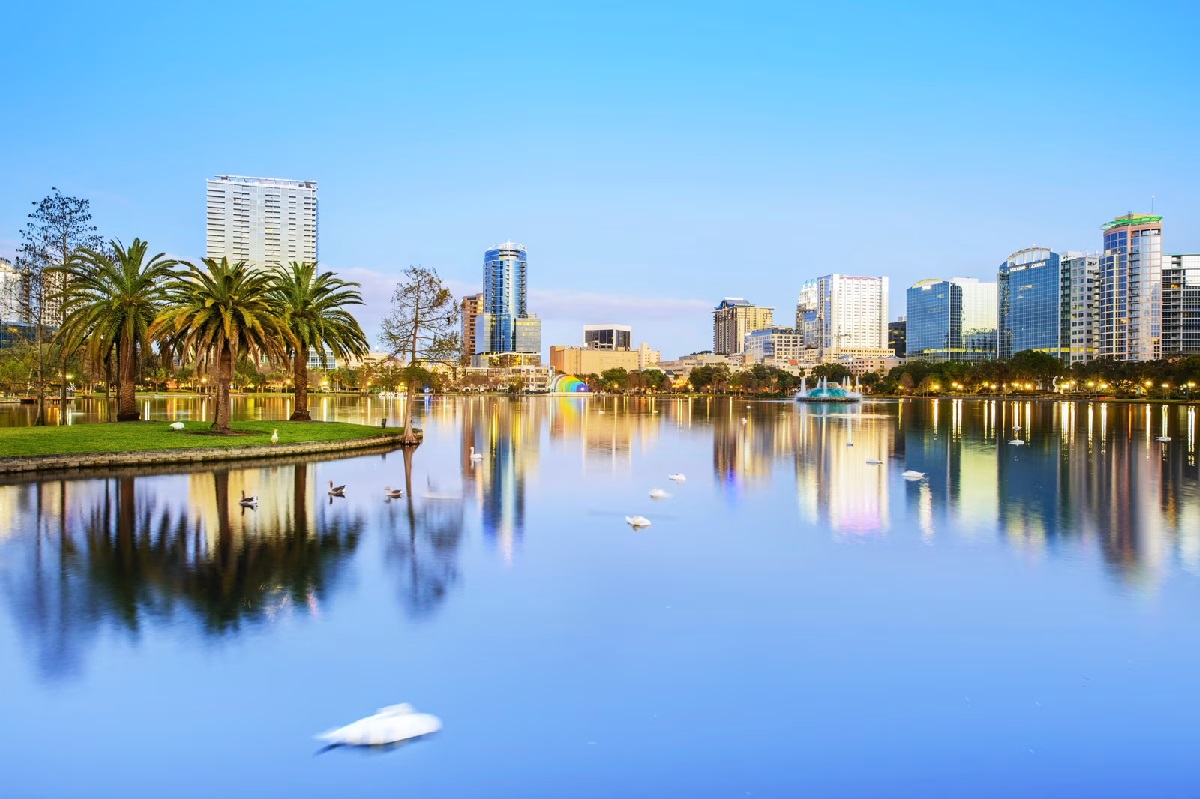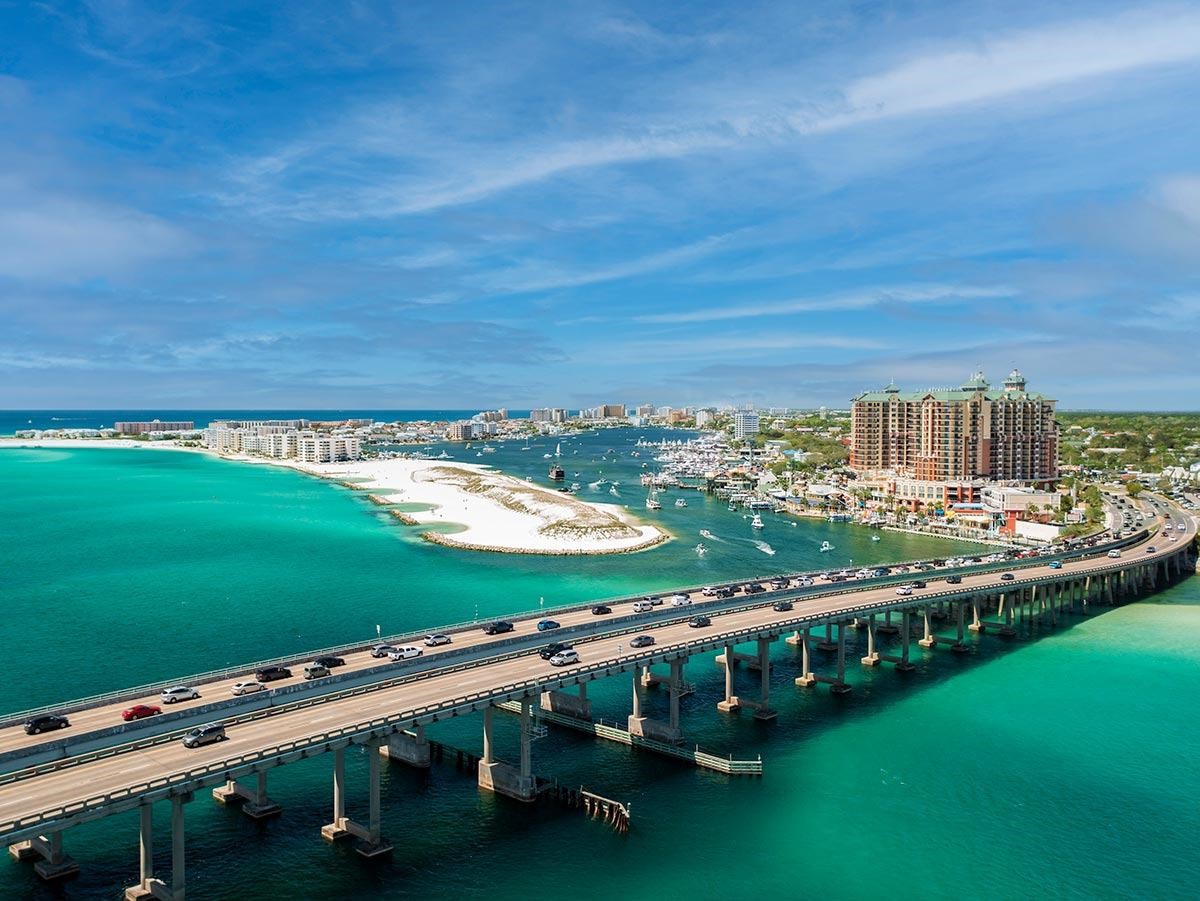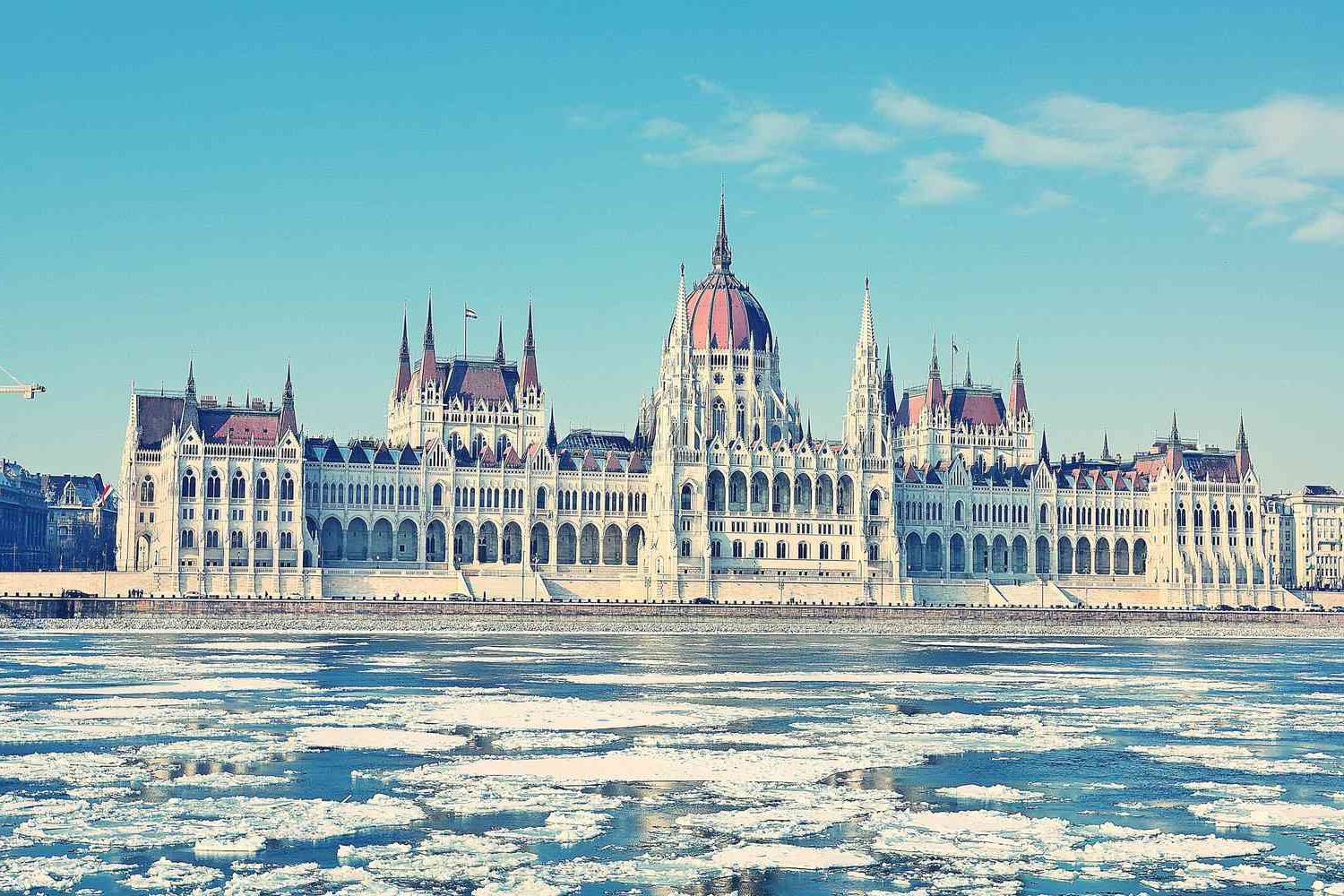Home>Weather and Climate>Average Temperatures In Orlando, FL


Weather and Climate
Average Temperatures In Orlando, FL
Published: March 3, 2024
Discover the average temperatures in Orlando, FL and plan your trip with insights into the weather and climate. Prepare for your visit with essential weather information.
(Many of the links in this article redirect to a specific reviewed product. Your purchase of these products through affiliate links helps to generate commission for Temperatures.com, at no extra cost. Learn more)
Table of Contents
Introduction
Orlando, Florida, is a city known for its vibrant atmosphere, world-renowned theme parks, and diverse cultural offerings. Nestled in the heart of the Sunshine State, Orlando experiences a subtropical climate that beckons visitors and residents alike to bask in its warm embrace. The city's weather patterns, characterized by balmy temperatures and occasional thunderstorms, contribute to its allure as a year-round destination for travelers seeking an escape from harsher climates.
In this article, we will delve into the average temperatures in Orlando, FL, exploring the nuances of its climate and the factors that influence its weather patterns. By examining seasonal temperature averages, historical data, and the underlying elements that shape Orlando's temperatures, we aim to provide a comprehensive understanding of what to expect when it comes to the city's weather. Whether you're planning a visit to Orlando or considering it as a potential place to call home, gaining insights into its temperature trends can help you better prepare for your experience in this dynamic city.
As we embark on this exploration of Orlando's temperatures, we invite you to journey with us through the ebb and flow of its climate, uncovering the fascinating interplay of environmental elements that contribute to the city's distinctive weather patterns. Let's unravel the tapestry of Orlando's temperatures, gaining a deeper appreciation for the meteorological tapestry that shapes this captivating city.
Climate in Orlando, FL
Orlando, FL, boasts a subtropical climate characterized by its warm and humid conditions. Situated in Central Florida, the city experiences distinct wet and dry seasons, contributing to its unique climatic profile. The subtropical climate of Orlando is influenced by its proximity to the Gulf of Mexico and the Atlantic Ocean, which play pivotal roles in shaping the city's weather patterns.
During the summer months, Orlando is enveloped in warmth, with average high temperatures ranging from the upper 80s to the low 90s Fahrenheit (around 31-34 degrees Celsius). The humidity levels often soar during this time, creating a sultry atmosphere that is emblematic of the region's subtropical climate. Additionally, afternoon thunderstorms are a common occurrence, providing relief from the intense heat and adding a dramatic flair to the city's weather.
As the year progresses into the fall season, Orlando experiences a gradual transition marked by slightly cooler temperatures and a reduction in humidity. The average highs during this time range from the mid-70s to the low 80s Fahrenheit (around 24-29 degrees Celsius), offering a pleasant respite from the summer heat. Fall also brings a decrease in precipitation, contributing to clearer skies and comfortable outdoor conditions.
Winter in Orlando is relatively mild compared to many other parts of the United States. While occasional cold fronts can bring cooler temperatures, the average highs typically range from the upper 60s to the low 70s Fahrenheit (around 20-23 degrees Celsius). The city experiences a drier climate during the winter months, with lower humidity levels and minimal rainfall, making it an appealing destination for those seeking a reprieve from harsh winter weather.
Spring heralds the onset of warmer temperatures and increased humidity as Orlando transitions into its wet season. Average highs during this time range from the mid-70s to the low 80s Fahrenheit (around 24-29 degrees Celsius), signaling the return of balmy conditions and occasional afternoon showers. The lush greenery of the city comes alive during this season, creating a picturesque backdrop for outdoor activities and exploration.
Overall, the subtropical climate of Orlando, FL, offers a diverse tapestry of weather experiences throughout the year, making it an enticing destination for visitors and a comfortable home for residents. The interplay of warm temperatures, humidity, and distinct seasonal shifts contributes to the city's vibrant and inviting atmosphere, inviting individuals to immerse themselves in its rich climatic offerings.
Seasonal Temperature Averages
In Orlando, FL, the seasonal temperature averages paint a vivid portrait of the city's climatic diversity. Each season brings its own distinct flavor, offering a spectrum of temperatures that shape the experiences of residents and visitors alike.
During the summer months, Orlando is bathed in warmth, with average high temperatures ranging from the upper 80s to the low 90s Fahrenheit (around 31-34 degrees Celsius). The sultry embrace of the summer season is accompanied by heightened humidity levels, creating an atmosphere that is quintessentially subtropical. Afternoon thunderstorms punctuate the days, providing a dramatic interlude to the sun-drenched landscape.
As fall unfolds, Orlando undergoes a gentle transition marked by slightly cooler temperatures and a reduction in humidity. The average highs during this season range from the mid-70s to the low 80s Fahrenheit (around 24-29 degrees Celsius), offering a welcome reprieve from the intensity of summer. The gradual shift in weather sets the stage for outdoor activities amidst milder conditions, beckoning residents and visitors to savor the changing tapestry of the city.
Winter in Orlando is characterized by its mild demeanor, with average highs typically ranging from the upper 60s to the low 70s Fahrenheit (around 20-23 degrees Celsius). While occasional cold fronts may bring cooler temperatures, the city's winter climate remains relatively temperate, drawing individuals seeking a break from harsher winter environments. The drier weather and lower humidity levels contribute to a comfortable outdoor ambiance, inviting exploration and leisurely pursuits.
Spring heralds the return of warmer temperatures and increased humidity as Orlando transitions into its wet season. Average highs during this time range from the mid-70s to the low 80s Fahrenheit (around 24-29 degrees Celsius), signaling the resurgence of balmy conditions and occasional afternoon showers. The city's natural surroundings burst forth with renewed vibrancy, creating an enchanting backdrop for outdoor adventures and leisurely strolls.
In essence, the seasonal temperature averages in Orlando, FL, offer a captivating journey through the ebb and flow of its climate. From the sultry embrace of summer to the gentle transition of fall, the mild demeanor of winter, and the revitalizing ambiance of spring, each season contributes to the city's rich tapestry of weather experiences, inviting individuals to embrace the ever-changing allure of Orlando's climate.
Historical Temperature Data
The historical temperature data of Orlando, FL, provides a compelling glimpse into the city's climatic evolution over the years. By examining the temperature trends and fluctuations recorded over past decades, we can gain valuable insights into the enduring patterns that have shaped Orlando's weather landscape.
The historical temperature records reveal a consistent pattern of warm temperatures, characteristic of the city's subtropical climate. Over the years, Orlando has maintained a reputation for its balmy weather, with average highs reflecting the city's penchant for warmth and sunshine. The data showcases the resilience of Orlando's climate, with minimal deviations from its established seasonal temperature norms.
Furthermore, the historical temperature data underscores the city's ability to sustain its inviting climate, drawing visitors and residents alike to revel in its year-round appeal. The records depict a tapestry of temperature fluctuations, offering a testament to the enduring allure of Orlando's weather and its capacity to provide a comfortable and enjoyable environment for those within its embrace.
As we delve into the historical temperature data, we uncover a narrative of consistency and reliability, with Orlando's climate remaining steadfast in its commitment to offering warm and hospitable conditions. The data serves as a testament to the city's enduring reputation as a destination renowned for its favorable weather, inviting individuals to partake in the myriad experiences facilitated by its enduring climatic charm.
In essence, the historical temperature data of Orlando, FL, paints a portrait of unwavering warmth and resilience, showcasing the city's steadfast commitment to providing a welcoming and enjoyable climate for all who seek refuge within its boundaries. This rich tapestry of historical temperature records serves as a testament to Orlando's enduring appeal as a city blessed with a climate that beckons visitors and residents to bask in its perennial warmth and hospitality.
Factors Affecting Temperatures in Orlando
The temperatures in Orlando, FL, are influenced by a myriad of factors that collectively shape the city's distinctive climate. Understanding these underlying elements provides valuable insights into the dynamics of Orlando's weather patterns and the forces at play in determining its temperatures.
-
Geographical Location: Orlando's proximity to bodies of water, including the Gulf of Mexico and the Atlantic Ocean, significantly impacts its temperatures. The maritime influence contributes to the city's subtropical climate, moderating temperature extremes and fostering a relatively consistent pattern of warmth throughout the year.
-
Latitude and Solar Insolation: Situated at a latitude conducive to ample solar insolation, Orlando experiences abundant sunshine, which contributes to the city's warm temperatures. The prolonged exposure to sunlight, particularly during the summer months, fuels the region's balmy climate, creating an environment characterized by enduring warmth.
-
Humidity and Moisture: The humidity levels in Orlando play a pivotal role in shaping its temperatures, especially during the summer season. The moisture-laden air, influenced by the city's proximity to water bodies, contributes to the sultry conditions that define the subtropical climate. The interplay of humidity and temperature creates an atmosphere that is emblematic of Orlando's weather patterns.
-
Urbanization and Heat Island Effect: The urban landscape of Orlando, characterized by extensive development and infrastructure, can exacerbate temperatures through the heat island effect. Urban areas tend to retain heat, leading to elevated temperatures, particularly during the night. This phenomenon can contribute to slightly warmer conditions within the city compared to its surrounding rural areas.
-
Topography and Elevation: While Orlando's topography is relatively flat, subtle variations in elevation can influence localized temperature gradients. Additionally, the city's proximity to inland water bodies and wetlands can impact microclimates, contributing to nuanced temperature variations across different areas within the region.
-
Weather Systems and Air Masses: The movement of weather systems and air masses, influenced by atmospheric circulation patterns, can introduce fluctuations in Orlando's temperatures. Cold fronts, tropical air masses, and prevailing wind patterns all contribute to the city's weather dynamics, influencing temperature shifts and seasonal variations.
-
Land Use and Green Spaces: The presence of green spaces and vegetation within urban areas can mitigate temperatures through shading and evapotranspiration, contributing to localized cooling effects. Efforts to preserve and expand green spaces in Orlando can play a role in moderating temperatures and enhancing the city's overall climate resilience.
By considering these multifaceted factors, we gain a deeper appreciation for the intricate interplay of elements that define Orlando's temperatures. The convergence of geographical, meteorological, and environmental influences collectively shapes the city's climate, fostering a tapestry of temperatures that underpin its unique atmospheric character.
Conclusion
In conclusion, the average temperatures in Orlando, FL, encapsulate the city's dynamic climatic tapestry, offering a captivating journey through the interplay of warmth, humidity, and seasonal transitions. From the sultry embrace of summer to the gentle transition of fall, the mild demeanor of winter, and the revitalizing ambiance of spring, each season contributes to Orlando's rich weather experiences, inviting individuals to embrace the ever-changing allure of its climate.
The subtropical climate of Orlando, influenced by its proximity to the Gulf of Mexico and the Atlantic Ocean, fosters a year-round environment characterized by warmth and occasional thunderstorms. The city's seasonal temperature averages paint a vivid portrait of its climatic diversity, showcasing a spectrum of temperatures that shape the experiences of residents and visitors alike.
Furthermore, the historical temperature data of Orlando provides a compelling glimpse into the city's climatic evolution over the years, underscoring a narrative of consistency and reliability. The enduring patterns revealed in the historical records serve as a testament to Orlando's steadfast commitment to offering warm and hospitable conditions, drawing visitors and residents to revel in its year-round appeal.
The temperatures in Orlando are influenced by a myriad of factors, including geographical location, latitude, humidity, urbanization, topography, weather systems, and land use. Understanding these underlying elements provides valuable insights into the dynamics of Orlando's weather patterns and the forces at play in determining its temperatures.
In essence, Orlando's temperatures reflect a harmonious convergence of environmental elements, shaping a climate that is as inviting as it is diverse. Whether one seeks the vibrant energy of summer, the mild tranquility of winter, or the rejuvenating spirit of spring, Orlando's weather offers a rich tapestry of experiences, inviting individuals to immerse themselves in its ever-changing atmospheric symphony.
As we conclude this exploration of Orlando's average temperatures, we invite you to embrace the city's climatic allure, allowing its warmth and vibrancy to captivate your senses and create lasting memories amidst its perennial embrace of subtropical splendor.

